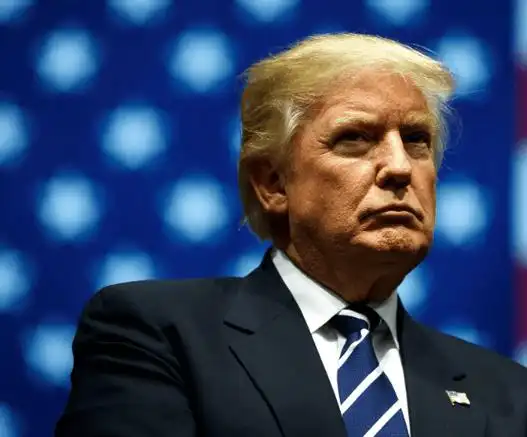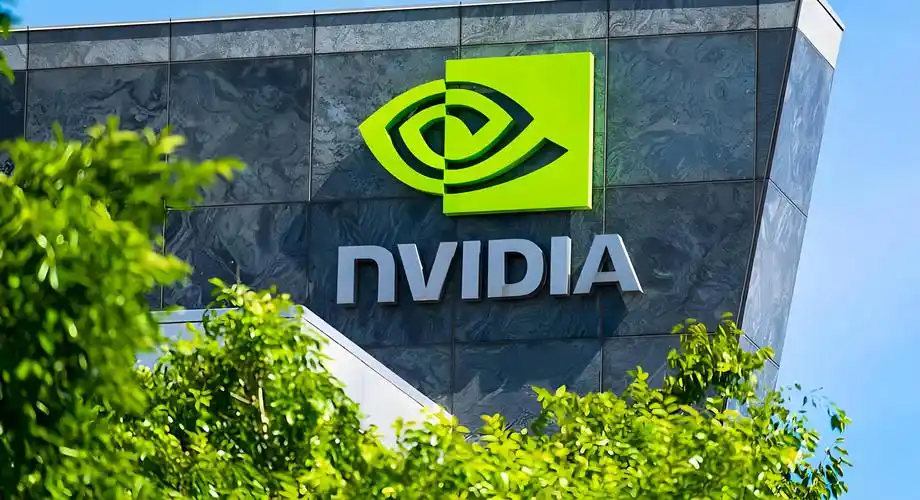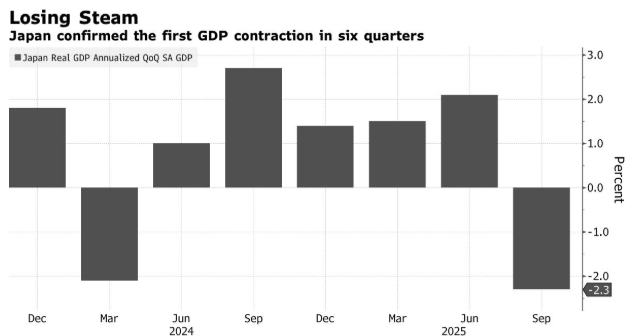President Donald Trump is preparing to meet next week with leaders of some of America’s biggest technology companies, which face import tariffs and tougher export rules that could upend their businesses.
A group that includes the chief executives of Hewlett-Packard Co, Intel Corp, International Business Machines Corp and Qualcomm Inc has discussed meeting with the government on Monday, according to people familiar with the matter. The people spoke on condition of anonymity because the plans have not been made public.
HP confirmed that it would attend the meeting on Monday. “Our leadership team’s top concerns include trade policy and US manufacturing,” said one representative.
Spokespeople for Intel, IBM and Qualcomm declined to comment. White House representatives did not immediately respond to a request for comment.
The White House has pushed through a series of policy changes that have the potential to disrupt the computer hardware industry. Tariffs would make it more expensive in manufacturing hubs like China and could disrupt supply chains. Tech companies also want clarity on what restrictions may be placed on their ability to export advanced technology from artificial intelligence data centers that are being built around the world.
Trump has vowed to fulfill a campaign promise to impose tariffs on major trading partners to offset what he calls an unfair trade balance. These changes will make it more difficult for the electronics industry to operate in the globally fragmented way that once made it so efficient.
The administration is developing an AI action plan that seeks to “maintain and strengthen” U.S. leadership in the field and is seeking public input on the plan.
“Your Chip Act is terrible, terrible,” Trump said in a speech to Congress on Tuesday, imploring House Speaker Mike Johnson to repeal it. Senate Democratic Leader Chuck Schumer, who negotiated the bill, predicted Wednesday that Trump’s request would fail.
In addition, Trump co-hosted an event this week with TSMC, which pledged to invest an additional $100 billion in U.S. factories. The Trump administration has pointed to the deal as a sign that the United States can use tariffs – rather than Chip Act-style incentives – to attract investment.
A growing body of data suggests that the likelihood of an imminent recession in the United States is rising.
A key indicator of an impending recession is the Atlanta Fed’s GDPNow forecasting model, which is updated in real time as new economic data is released. Just last Thursday, the model forecast annual growth of 2.3 percent in the first quarter of 2025. However, after the release of economic data on Friday, that forecast plummeted to minus 1.5 percent of recession.
Then, on Monday, additional data caused the forecast to fall even further to a staggering -2.8 percent, reinforcing recession warnings.
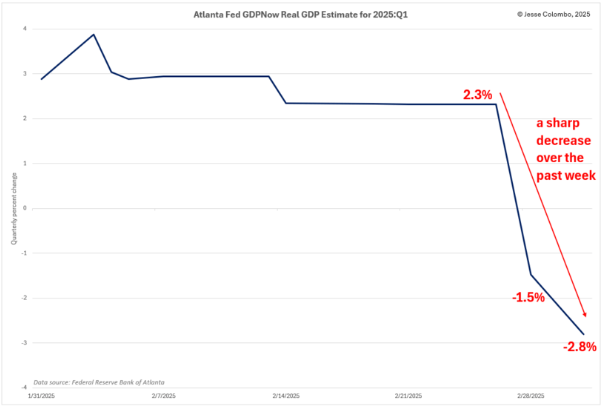
GDPNow’s forecast for economic growth in the first quarter of 2025 fell sharply on Monday, mainly due to a big drop in residential investment (spending on new homes and home renovations).
Given that housing accounts for 15-18 per cent of US GDP, the recession has been a significant drag on growth.
Shockingly, today GDP shrank to -2.8%, the worst forecast since the coronavirus lockdown in 2020.
In general, the Fed will keep raising rates until “some unexpected event occurs,” which usually refers to an industry or speculative boom that flourished in the previous low-rate environment.
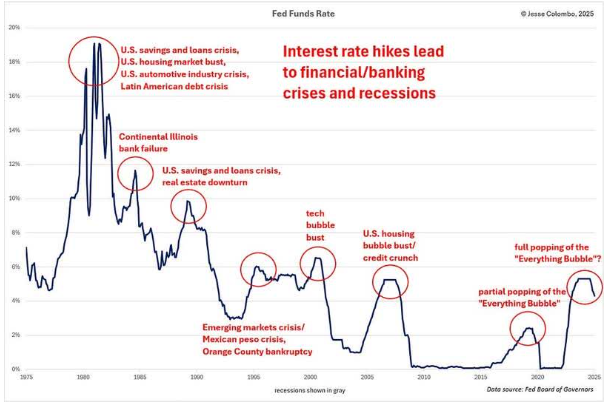
Over the past three years, the Fed has embarked on an aggressive rate-raising cycle that has pushed the federal funds rate from near zero to a peak of 5.3 per cent – the fastest increase since the early 1980s.
More recently, with signs of economic weakness becoming apparent, the Fed has cut interest rates to 4.3%. This tightening cycle is even more extreme than the rate hikes of the mid-2000s that triggered the housing downturn and subsequent Great Recession.
While many economists and investors remain hopeful of a soft landing, history suggests that such an outcome is rare – especially after such a large rate hike.
Several key indicators are warning of an impending recession – and even suggesting that we may already be in one.
One of the most reliable indicators is the 10-year / 2-year yield spread, which is calculated by subtracting the 2-year U.S. Treasury yield from the 10-year U.S. Treasury yield. The indicator has accurately predicted the past six recessions. When the spread falls below 0%, it signals an inverted yield curve – one of the strongest predictors of an impending recession.
As shown in the chart below, the gray shaded areas represent past recessions, clearly illustrating the historical correlation between inverted yield curves and recessions.
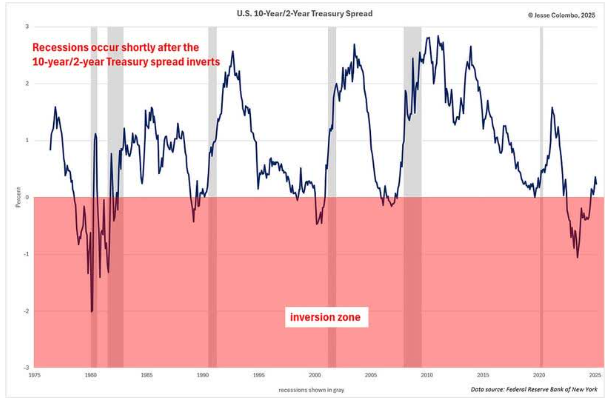
Another recession indicator based on the yield curve is the New York Fed Recession Probability Model, which estimates the likelihood of a recession within the next 12 months. As that indicator rises, so does the likelihood of a recession.
However, when it started to fall, it coincided with an inversion of the yield curve – a signal that the economy may have fallen into a recession.
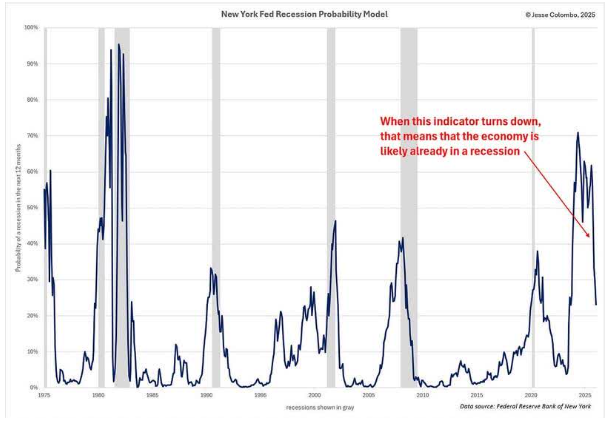
Over the past year, this indicator has trended downward, indicating that the U.S. economy is unfortunately in recession.
